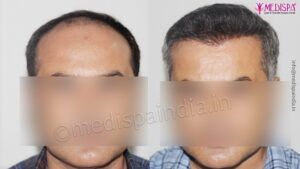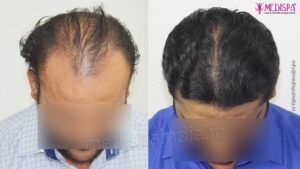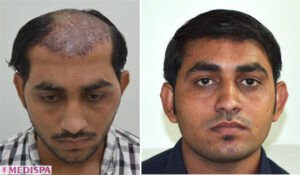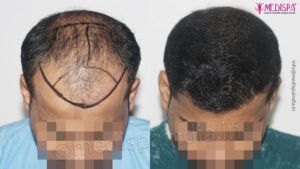
These days, hair transplant operations are quite successful and are attracting a lot of interest from those who are experiencing hair loss all around the world. The development of cutting-edge technology has made a great deal of previously unthinkable possibilities attainable. Today, high density hair growth with incredibly attractive and natural-looking outcomes is considered a successful hair transplant.
People are frequently misinformed about the process, and using dubious internet sources might make matters worse. Therefore, before deciding whether to get a hair transplant, it is important to study the pertinent material and clear up any questions you may have.
Hair transplant in Jaipur has made great strides, as evidenced by the outstanding outcomes at a number of its facilities. The Medispa hair transplant clinic in Jaipur is renowned for its superior work in the industry. Don’t believe us when we say we are the most well-known hair transplant clinic in the country; click the button and check for yourself.
In comparison to other parts of the nation, the hair transplant cost in Jaipur is far too low. Due to intense competition between clinics and an oversupplied hair transplant market, costs are quite low.
Dr. Suneet Soni, the founder of Medispa clinics, is regarded as one of the best and most accomplished hair transplant surgeons in the world. His fame extends beyond India’s borders as well. He has received a lot of praise for his extraordinary talent in creating a hairline that looks really natural. His surgical abilities guarantee the highest cosmetic outcomes while ensuring maximum patient comfort.
What causes scars after hair transplant?
You cannot anticipate a scar-free procedure because scarring is a natural part of hair transplant surgery, just like it is with all surgeries. In perfect conditions, scarring that is nearly imperceptible is undoubtedly a possibility. What results in severe scarring?
- The most frequent reason for severe scarring following a hair transplant is the employment of outdated methods and equipment.
- The surgeon’s lack of training
- The surgeon’s lack of experience and qualifications
Mantra to lessen post-hair transplant scarring?
Hair transplantation is thriving with fresh concepts and technology in the modern period, when every sector is enhanced with breakthroughs. Today, it is undoubtedly feasible to almost eliminate scars with the right procedures, modern technology, and skilled hands.
Let’s discuss in more depth how to lessen scarring following each hair transplant process.
Scarring following FUT hair restoration?
In a FUT hair transplant, the doctor cuts a 1.5–2 cm slice of skin from the donor location. To harvest individual hair follicles, this strip is divided into small portions and sent to the professionals. Strip harvesting from the donor area necessitates suturing at the donor location for painless healing; if improperly done, scarring will result. After being harvested from the donor locations, the hair grafts are implanted.
The donor region should be sutured using a modern technique called “Trichophytic closure” to prevent scarring. With this method, one side of the incision is bevelled, and when they are close together, they overlap. As a result of the overlapping, nearly unnoticeable scars and even hair growth over the incision line are made possible.
Post-FUE hair transplant scarring?
In a FUE hair transplant, each hair graft is pulled out of the donor region separately using a punch-like tool that has a certain diameter. The punch is placed into the skin one at a time and pulled with the hair transplant. The greater number of hair transplants produced during the surgery might result in significant circular scarring. Therefore, it is crucial to carefully harvest the hair transplant from the donor area with extraction of each hair graft from a higher inter distance in order to make the scar nearly undetectable. The improved punching tools have a reduced diameter, which almost eliminates the scar. Therefore, using the proper punch device size is crucial to reducing scarring.
How can scarring from a hair transplant be removed?
So now you are aware of how a skilled surgeon could reduce scarring after a hair transplant. But what if you’ve already had hair transplant surgery but still have scars from hiring an unskilled surgeon?
In situations when the patient is dissatisfied with the severe scarring after a hair transplant, scalp micropigmentation is used to conceal the scars. In scalp micropigmentation, pigments are applied in the shape of round dots to the scarred region. The process creates the appearance that hair is growing over the damaged region, totally concealing the scars.







